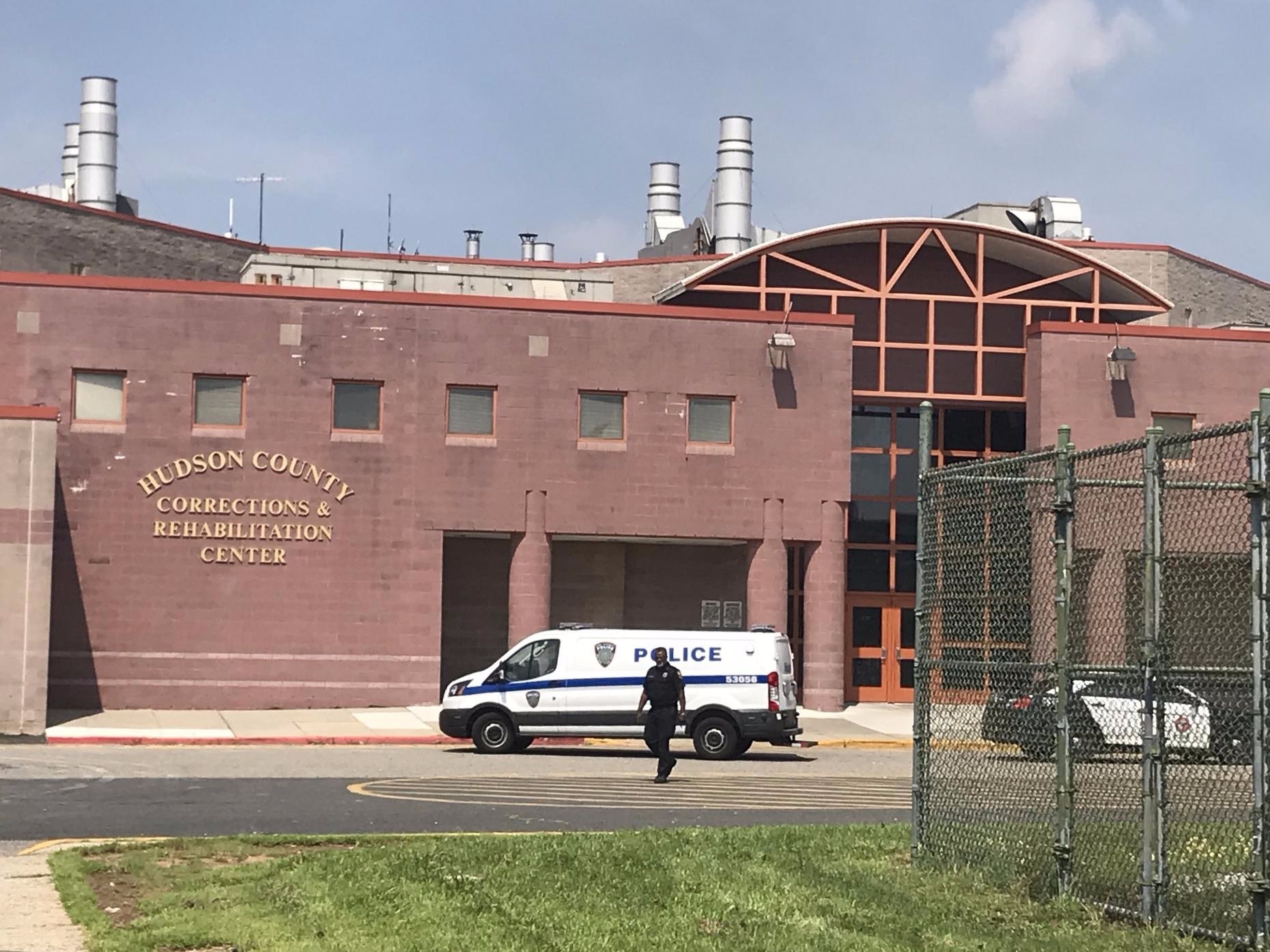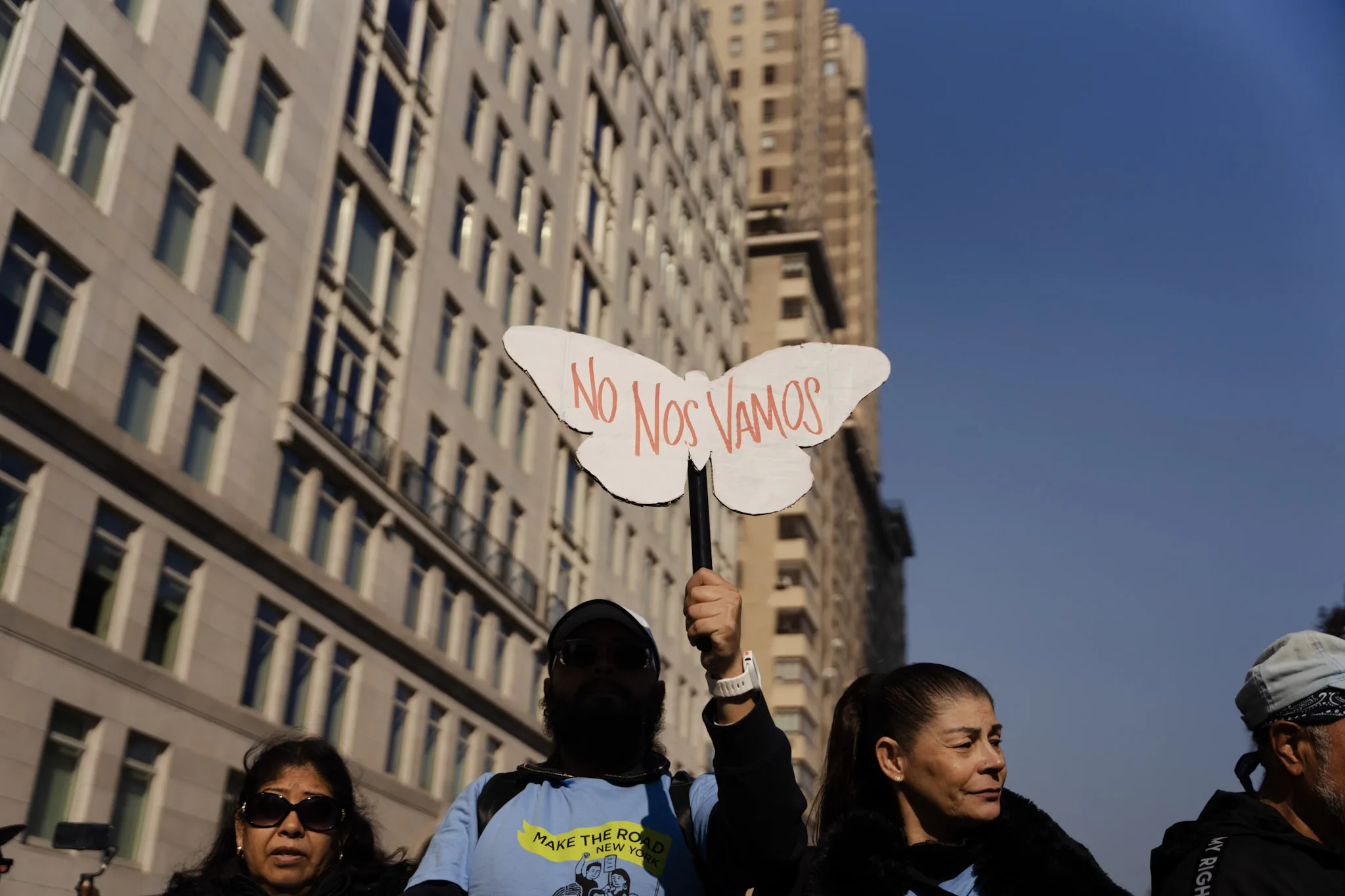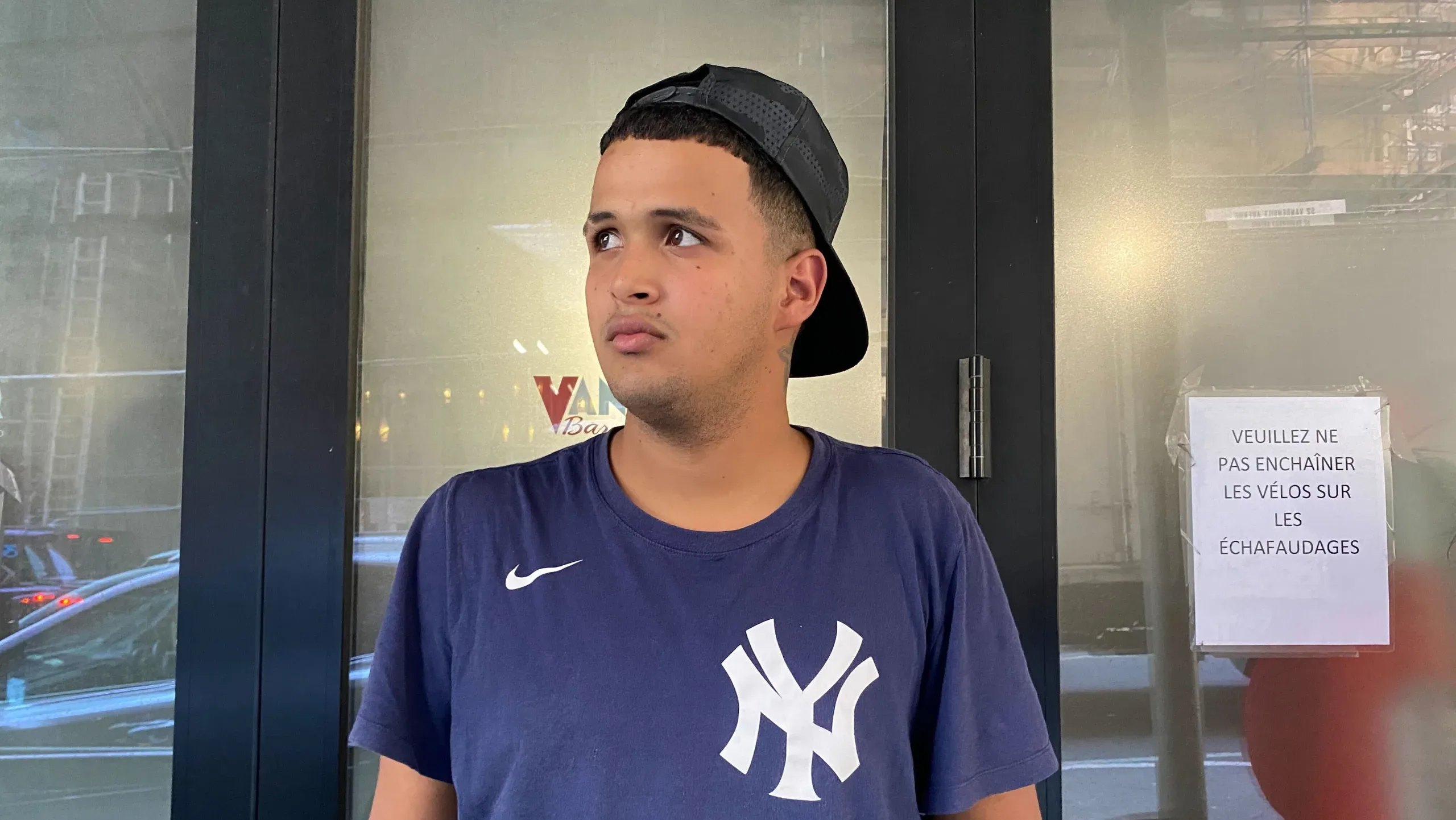This story was produced in cooperation with WNYC
When a person is detained by the federal Immigration and Customs Enforcement Agency in New York City, odds are they will be processed downtown at 26 Federal Plaza and then swiftly shuttled eight miles west to the Hudson County Correctional Facility in New Jersey. With about 600 ICE detainees as of late last year, Hudson County is used more than any other facility to hold city immigrants whose rights to remain in the United States are under question.
The facility has been plagued, however, by reports that immigrants are treated poorly. Following a surprise vote by the county’s Board of Freeholders to renew the ICE contract in August, activists sued to dismantle it, and on Sept. 6, Hudson County Executive Tom DeGise announced that the county would vote to end its contract with ICE by 2020 and possibly sooner. Yet what could seem like a victory may turn out to be bad news for New York City immigrants.
The fight over whether or not ICE sends detainees to Hudson Correctional has become another hazy moral conundrum over how to respond to immigration enforcement under President Trump. Community activists celebrated Hudson County’s decision, but immigration legal defense groups said that the move could incentivize ICE to quickly move all detainees from the jail and relocate them farther away, stunting their legal cases and preventing their loved ones from visiting. That concern has been particularly voiced by the New York Immigrant Family Unity project (NYIFUP), the city program that provides free legal defense to all needy immigrants who have been arrested or have removal cases in New York City.
In a joint letter, the NYIFUP providers—The Bronx Defenders, Brooklyn Defender Services, and the Legal Aid Society—implored DeGise to postpone the vote on ending the contract. By ending the ICE contract, whether tomorrow or in 2020, the county would be “harming detained people and others arrested by ICE in the New York City metropolitan area,” the letter said.
“I’m not sure that everybody realizes that most of the Hudson County detainees are New Yorkers, and they have New York families and jobs and lawyers,” said Andrea Sáenz, supervising attorney at Brooklyn Defender Services’ immigration practice and one of the letter’s signatories. While she and her colleagues want to dismantle ICE’s deportation machinery in theory, they stress short-term, practical considerations. NYFIUP “is only able to do its work because the clients are going to court in New York, and they’re held near New York,” Sáenz said.
The Hudson County freeholders recently postponed the vote on the December 2020 expiration, but the county still plans to end the contract by then. To understand how the process might play out, it’s instructive to look at what has happened in other counties that have taken similar steps; so far this year, localities in Oregon, Virginia, and Texas have pulled out of ICE contracts. Atlanta announced it was pulling out at almost the exact same time as Hudson County did. In California, two adjacent counties which ended their ICE cooperation have already moved all their detainees. How they did that illustrates what could happen in Hudson County.
West Coast Conundrum
In June and July of this year, respectively, Sacramento and Contra Costa counties in California decided to discontinue contracts that allowed ICE to keep detainees at their county jails. In Sacramento, the Board of Supervisors voted 3-2 to let the contract expire on June 30 without renewal, while in Contra Costa, the county sheriff activated a clause in the contract that allowed the county to cancel it with 120 days notice.
Sacramento supervisors gave ICE little in way of advance notice, and two of them said they acted out of a sense of community pressure and a distaste of being seen as helping ICE target the local undocumented population. “I think it had been kind of bubbling up over time,” said District 5 Supervisor Don Nottoli, who voted in favor of the discontinuation. “We got some inquiries, my office and the other supervisors, as well as the administration, about when the contract would come up for renewal and so forth.” A 2015 report by ICE’s Office of Detention Oversight found that the Sacramento jail was compliant with just one out of sixteen detention standards. The jail was called a “concentration camp.”
During the board’s public meeting prior to the vote, dozens of community activists spoke out against the ICE contract. “I’m just so upset that Sacramento County would consider renewing this contract knowing… damn well the trauma that we carry, knowing that we are struggling day by day, knowing and fearing that our parents or even us may be detained,” says one self-described undocumented student in a video of the meeting posted online. No one spoke in favor of renewal.
Several of those who spoke, however, did not appear to understand that cutting off ICE would not lead to the release of the immigrants held at the jail. They apparently believed Sacramento had a say in what would happen to the detainees and outlined less restrictive measures to jail detention such as orders of supervision or ankle monitors.
Against this backdrop, the supervisors felt that it was a straightforward choice. “I didn’t want to be part of a decision that would essentially ignore the environment of fear that continues, unfortunately, and was inspired by the Trump administration’s particular posture,” said Supervisor Phil Serna, who voted to end the ICE contract. Both Serna and Nottoli said that the issue of detainees being moved farther from family and attorneys had come up in the past, but not in a significant way. Serna said he considered the insinuation “a scare tactic by our sheriff, who happens to be a supporter of the Trump administration,” in order to get them on board with extending the contract.
Where are the Detainees?
Neither Serna nor Nottoli could say with certainty what ultimately happened to the ICE detainees at the Sacramento jail. Nottoli said he’d heard that some had been taken 1,000 miles away to Aurora, Colorado, and others were moved elsewhere in-state.
What is certain is that none of them remain at Sacramento and no one has been able to keep track of where they are. Neither supervisor was aware of any county or activist push to work with ICE to influence the way detainees would be moved out of the facility once the decision to let the contract expire was made. ICE records published last November as part of a Freedom of Information Act request show that the Sacramento facility was holding 180 detainees, but Nottoli said he believed the number was lower when the supervisors voted. Few of the detainees had legal representation, so their movements weren’t well tracked, said Katie Fleming, an immigration attorney with the California Rural Legal Assistance Foundation.
In Contra Costa, many of the over 200 detainees held at the West County Detention Center as of last November had legal representation. Sheriff David Livingston abruptly cancelled the contract in July, citing in a statement on his Facebook page the unwanted attention that ICE brought and the uncertainty over ICE funding for the jail. Ending the agreement “caught everyone off guard, so we responded in a quick, efficient way. We got elected officials on board, attorneys on board, created a community fund,” to bond out those who were eligible, said Tony Bravo, a spokesman for the Contra Costa Immigrant Rights Alliance.
A spokesman for the sheriff pointed to the Facebook statement and did not respond to more detailed follow-up questions.
Activists urged ICE to release detainees and keep those who remained in the same area of legal jurisdiction, but that largely did not work. “At Contra Costa, [ICE was] given four months, but they decided to take everyone out five or six weeks after [the decision], even though they had more time,” said Valerie Ann Zukin, the lead attorney coordinator at the Northern California Collaborative for Immigrant Justice, referencing the 120-day cancellation notice. Zukin said ICE moved at least 30 detainees without notice, moving to change the jurisdiction of their cases, “a direct interference in right to counsel.” She said ICE contends notice is “a security risk.” An ICE spokesman for the San Francisco field office did not respond to questions.
In a few cases, Zukin said, immigration judges denied changes of venue, which meant that detainees could appear at the local immigration court by teleconference. Other judges let the cases go with the detainees to venues hundreds or thousands of miles away from their attorneys. Zukin and Bravo said detainees had been moved to facilities in Aurora, Colorado — the same area Nottoli said Sacramento-area detainees had been taken — as well as Tacoma, Washington. Zukin said some cases had been moved to Hawaii.
Such transfers make it nearly impossible for some pro bono attorneys to keep representing their clients. Nor can they keep tabs on who is being arrested in California because the cases are no longer put on the local immigration docket.
Hudson Looks Ahead
The experience of Contra Costa especially worries the New York attorneys considering Hudson County. Even now, “when our cases have gotten to a certain stage, a denial at the [Board of Immigration Appeals] level, we’ve seen our clients moved to Louisiana, Etowah, [Alabama], they’re places that are very far away,” said Gregory Copeland, a supervising attorney at the Legal Aid Society’s immigration law unit. Etowah in Alabama is among the most notorious jails that ICE sends detained immigrants.
Some detainees whose cases are not progressing have already been moved to Etowah, said Rosa Santana, the detainee visitation program coordinator at First Friends of New Jersey and New York, an advocacy group in Kearny, New Jersey. “If the cases are not really moving, and they’ve been here for a while, that’s usually where they transfer them,” she said.
The transfers themselves can be burdensome. “When they’re transferred they suffer, it’s 2 or 3 days on a bus, they can hardly use the restroom, they just get a sandwich [per day],” Santana said.
Having a case transferred out of jurisdiction creates serious legal difficulties because court orders made in one circuit don’t necessarily hold in others. The 2015 decision in Lora v. Shanahan in the United States Court of Appeals for the Second Circuit dictated that immigrants held in detention during removal proceedings were entitled to bond hearings within six months of being detained. That ruling was later vacated as a result of the Supreme Court’s Jennings v. Rodriguez decision earlier this year, but for a period of over two years, immigrants held in New Jersey and the rest of the Second Circuit had greater access to bond than counterparts elsewhere in the country.
Zukin, the California attorney, referenced efforts and court orders in California intended to force ICE to give detainees greater access to their attorneys; while the two facilities that previously held ICE detainees fell under the jurisdiction of these agreements, the facilities they were taken to may not.
Jim Kennelly, a spokesman for the Hudson County’s DeGise, said that county would not wash its hands of the detainees once the contract ended. Plans to phase out the contract with ICE had been in the works for a while, because the county has agreements to provide room for other local, state and federal inmates.
“As part of the whole plan, we’re going to do a professional survey of the detainees,” Kennelly said. That may involve hiring a third-party contractor — “not ICE and not us,”— that would interview the detainees, with interpreters if necessary, to determine where they would prefer to go.
Kennelly also said that the county would also establish contact with other counties with ICE contracts in order to keep Hudson’s detainees closer to their lawyers and families. The county plans to give ICE recommendations to make the transfers occur as “effectively and as humanely” as possible, he said.
This may be futile. If ICE decided to fly every detainee to Louisiana tomorrow, “we would have no legal authority to stop them. That’s not what we’d like to do, and there’s no indication that ICE is going to do that,” Kennelly said. Asked if there would be public meetings, a final public report, or any kind of timeline for the recommendations Hudson would present to ICE, Kennelly said it was unlikely. “Any timeline could be instantly disrupted by ICE. Even putting it out doesn’t really make a lot of sense.”
Santana of First Friends, said that her group was also conducting a survey among ICE detainees at the jail, in English, Spanish, and French, to gauge how much they understood about what a transfer would mean and how it would work.
陈学理胜选凸显华人社区“右转”
Rachael Yong Yow, a spokeswoman for ICE’s New York office, which has jurisdiction over the Hudson County jail, said ICE would wait for the county vote before deciding how to move forward. She said that ICE would decide whether to release detainees on a case-by-case basis.
NYIFUP attorneys worry that moving detainees out of jurisdiction will hamstring its program. Even if clients are kept in the same jurisdiction, moving them makes it more expensive and time-intensive to take on each case. Attorneys also are concerned that ICE will force moved detainees to communicate with attorneys and judges by videoconference, making it more difficult to communicate effectively.
“We had thought there was this opportunity to really engage in this conversation… and all of a sudden, we found out that there’s this exit strategy already in place,” said Sáenz, the Brooklyn Defender Services attorney. “Once they’re gone, it’s just out of sight and out of mind.”
Correction: This article misidentified the employer of Andrea Sáenz, which is Brooklyn Defender Services, not Bronx Defenders.














